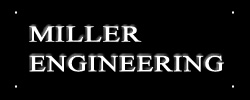 Greg Gerganoff, CSP, Esq., possesses extensive experience in safety compliance and practice involving OSHA and MSHA. He obtained is law degree from Western Michigan University, Cooley Law School and practiced general civil law for approximately 12 years in Colorado prior to entering the safety profession. Mr. Gerganoff earned a Certified Safety Professional certification and has 18 years of field safety experience in mining, oil and gas, construction, manufacturing, power plant outages, and light rail construction.
Greg Gerganoff, CSP, Esq., possesses extensive experience in safety compliance and practice involving OSHA and MSHA. He obtained is law degree from Western Michigan University, Cooley Law School and practiced general civil law for approximately 12 years in Colorado prior to entering the safety profession. Mr. Gerganoff earned a Certified Safety Professional certification and has 18 years of field safety experience in mining, oil and gas, construction, manufacturing, power plant outages, and light rail construction.
His professional safety experience includes OSHA / MSHA Safety field work and compliance with experience in the heavy construction, manufacturing, light rail construction, power plant outages, public schools, oil and gas, mining, pipeline, and trenching and excavation industries.
- Authorized Outreach Trainer for OSHA General Industry.
- PEC Safeland Basic and Core instructor (Oil and gas).
- MSHA Approved Instructor (Blue Card) for Surface, Metal/nonmetal.
- Member of the American Society of Safety Professionals.
Litigation Support: Mr. Gerganoff assists with discovery questions regarding safety matters. Safety opinions based upon statutory, administrative, judicial rulings and related industry association safety policies ancillary to OSHA and MSHA. Mr. Gerganoff is retained by attorneys for both Plaintiff and Defendant. Some of the subject matter litigation he has handled include:
- Forklift Safety and Operation
- Lock Out Tag Out/Natural Gas Compressor Stations
- Oil and Gas Safety
- Manufacturing Safety
- Construction Safety
- Compressed Gas Cylinder Safety
| - Crane and Aerial Lift Safety
- Mining Safety
- Traffic Control Plans / MUTCD
- Working at Heights, Employee Safety Training
- Fall Protection, Ladders, Stairways
|
View Greg Gerganoff's Consulting Profile.
By: Greg Gerganoff
Hazard recognition plays a vital role in keeping employees safe. Some hazards are easily recognized, for example an employee climbing up a 20-ft ladder while holding tools in both hands is an obvious fall hazard. While some safety hazards are immediately recognizable, others require training to spot and avoid. One such hazard is hydrogen sulfide (H2S). Training is a key method to avoid the "ostrich zone." You do not want to bury your head when facing this hazard.
By: Greg Gerganoff
When personal injury events occur legal negligence actions may arise. Common law negligence is established by plaintiff showing defendant owed plaintiff a legal duty, to conform to a standard of care, defendant breached that duty, plaintiff suffered injury and there is a causal relationship between the breach and injury.
By: Greg Gerganoff
Lawyers and courts turn to expert witnesses to provide triers of fact with explanations of aspects of a case that are not commonly known. It is the subject matter expert's education, experience, and skill in a particular area that will help the triers of fact to reach a well-informed conclusion/decision. Examples of expert witnesses include medical doctors, accountants, engineers, DNA scientists, and more. Lawyers (and the courts) will employ an expert witness to shed more light upon factual issues for the purpose of discerning the truth. In short, expert witnesses educate, clarify, and explain a subject that is not common knowledge for most people.
By: Greg Gerganoff
The employ of expert witnesses in litigation is typically undertaken to help the decider of fact (judge or jury) decipher an area of specialized knowledge which is key to the case. The expert report serves the primary purpose of "educating" deciders of fact on topics not commonly known to the general public. However, a noncomplying expert report can wreak havoc on a case, increase costs or worse, have the expert's testimony precluded in whole or part from use at trial. This of course is contrary to the purpose of retaining an expert in the first place. Understanding the parameters of compliance (C.R.C.P. 26 (a) (2) (B) (I)) and how sanctions for non-compliance (C.R.C.P. 37 (c) (1)) may be applied is important not only for legal counsel but the expert as well under the 2015 rule updates and the recent Colorado Supreme Court case, Catholic Health Initiatives Colorado v. Earl Swensson Associates, Inc.
10/26/2016
· Construction
By: Greg Gerganoff
During a recent conversation with a friend who had purchased a small construction company he mentioned in passing that one of his employees had injured his ankle on the job but didn't report it to his work comp carrier as it was a minor incident, no days off work, didn't want his rates to go up, why bother. All is good. Right?
By: Greg Gerganoff
Electricity is a vital source of energy in our daily lives. It powers tools, provides light and heat. Our working lives are much improved and efficiency greatly increased thanks to electricity. But what about those situations where power from the grid is unavailable. Well, portable generators are an excellent tool for such a scenario.
By: Greg Gerganoff
Safety culture is a term frequently bandied about in today's business world and sounds as trendy as "mission statements" were years ago. (Let's not forget "best in class". First time I heard this at a company meeting I looked around to make sure I hadn't mistakenly wandered into a dog show. Really?)
By: Greg Gerganoff
Use fall protection; Use trench boxes when excavating; Lock out Tag Out any time repair or maintenance of equipment involving stored energy is performed; Slips, Trips and Falls are one of the most expensive types of injury. For my sixteen years in safety these safety hazards were always in the forefront of safety concerns for businesses and safety professionals. Guess what? Work related road way crashes is the number one serious/fatal injury cause for U.S. workers. OSHA recognizes this. CDC/NIOSH has generated a white paper studying this fact. Who knew? So here is some info on this number one safety hazard in the US work place.
By: Greg Gerganoff
In the safety world hazard recognition plays a vital role in keeping your people safe from unsafe behaviors and/or conditions. Some hazards are easily recognized, for example an employee climbing up a 20 foot ladder with tools held in both hands. (This is a fall hazard by the way.) Common sense right? The safety guy who taught me safety had a great response to this attitude, "Few people have any sense (read knowledge) in common (read shared alike)". So while some safety hazards are immediately recognizable others require training to spot and avoid. Training is a key method in avoiding the "Ostrich Zone". One such hazard is Hydrogen Sulfide. You don't want to bury your head facing this hazard. (Won't do much good anyway, Hydrogen Sulfide is heavier then air!)
By: Greg Gerganoff
"If you don't know where you are going, you will probably end up somewhere else.", so said Laurence J. Peter, a professor at the University of Southern California whose works touched the business world. (He is well known for the "Peter Principal".) Peter's above quote essentially points out that action lacking a clear objective will likely lead to unwanted or unintended consequences.
By: Greg Gerganoff
Hazard recognition plays a vital role in keeping employees safe. Some hazards are easily recognized, for example an employee climbing up a 20-ft ladder while holding tools in both hands is an obvious fall hazard. While some safety hazards are immediately recognizable, others require training to spot and avoid. One such hazard is hydrogen sulfide (H2S). Training is a key method to avoid the "ostrich zone." You do not want to bury your head when facing this hazard.
By: Greg Gerganoff
When personal injury events occur legal negligence actions may arise. Common law negligence is established by plaintiff showing defendant owed plaintiff a legal duty, to conform to a standard of care, defendant breached that duty, plaintiff suffered injury and there is a causal relationship between the breach and injury. FN 1 But what sources of standard of care proofs are available? How does a litigant go about proving standard of care?













 Greg Gerganoff, CSP, Esq., possesses extensive experience in safety compliance and practice involving OSHA and MSHA. He obtained is law degree from Western Michigan University, Cooley Law School and practiced general civil law for approximately 12 years in Colorado prior to entering the safety profession. Mr. Gerganoff earned a Certified Safety Professional certification and has 18 years of field safety experience in mining, oil and gas, construction, manufacturing, power plant outages, and light rail construction.
Greg Gerganoff, CSP, Esq., possesses extensive experience in safety compliance and practice involving OSHA and MSHA. He obtained is law degree from Western Michigan University, Cooley Law School and practiced general civil law for approximately 12 years in Colorado prior to entering the safety profession. Mr. Gerganoff earned a Certified Safety Professional certification and has 18 years of field safety experience in mining, oil and gas, construction, manufacturing, power plant outages, and light rail construction. Meyer R. Rosen, FRSC, FAIC, CPC, CChE, is a leading creative consultant for the Legal Profession and specialty Chemical / Personal Care Industries. He is the Founder & President of Interactive Consulting, Inc. (
Meyer R. Rosen, FRSC, FAIC, CPC, CChE, is a leading creative consultant for the Legal Profession and specialty Chemical / Personal Care Industries. He is the Founder & President of Interactive Consulting, Inc. (

